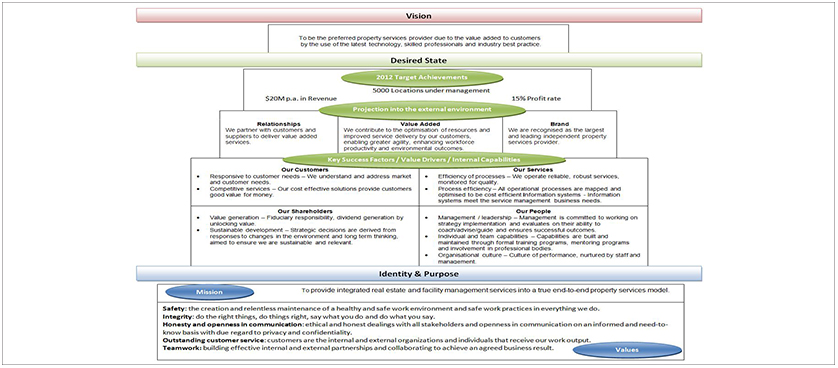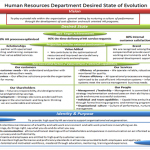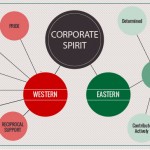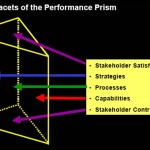Desired State of Evolution – the newest instrument in the managerial toolkit
The pursuit of organizational clarity and alignment towards a strategic direction has preoccupied researchers and practitioners for many decades. Especially over the last 50 years, a variety of management concepts have been popularized and adopted by organizations with more or less success.
Integrating strategic management conceptsSome of the early articles on the topic of strategic planning and clarity focused on clarifying how the concept of planning applies to various settings (Pryor 1964, Smiddy, 1964) or in proposing frameworks for strategy formulation (Ansoff 1964). Two such management concepts that gained popularity since then are mission and vision statements.
Towards the end of 1990, the interest of both researchers and practitioners focused increasingly towards exploring the use of integrated approaches that link strategic management concepts related to corporate identity: mission, vision, values and capabilities or competencies (Raynor 1998, Stuart 1999).
The trend of integrating mission and vision statements in strategic management models or frameworks continued with the anchoring in the vision statement of concepts such as the Balanced Scorecard. Kaplan & Norton (1996) placed vision and strategy at the centre of the development of the Balanced Scorecard.
Since then a vast literature analyzing the connections between an organization’s approach to strategic planning and its business performance in relation with the Balanced Scorecard was developed (Ahn, 2001; Niven, 2002; Mooraj et al, 1999, Andersen et al, 2001; Kaplan and Norton, 2001).
Desired State of EvolutionIn order to implement a logical and articulated strategic performance management system based on the Balanced Scorecard, an organization should clear identify what is the direction it is heading for, what it is trying to achieve (Andersen et al, 2001 citing Senge, 1990 and Kotler, 1996). The process of integration of all strategic statements of an organization that comprises values, mission, destination statement and vision can be facilitated by the creation of the Desired State of Evolution (Brudan, 2010).
Desired State of Evolution incorporates a combination of new and old strategic management concepts concepts, grouped in three levels: Purpose and Identity at the bottom, Desired State in the middle and Vision at the top. Together, they are linked in a sequence that can be described as the “Desired State of Evolution”.
The first level, “Purpose and Identity” is represented by the mission and values of the organization. The mission statement is essential, as it represents the reason why the organization exists. Linked to it are organizational values used by many organizations to drive behaviour, being considered an integral part of organizational culture. By linking them to the mission, desired state and vision, they become an important component of the strategy management system and key elements or organizational communication.
“Desired State”, the second level of components is represented by three sets of elements. This is an intermediary level that makes the link between mission and vision. It integrates the “destination statement” approach (Lawrie and Cobbold, 2004) of representing the desired state of the organisation at a future point, while adding by internal oriented capabilities, competencies, value drivers or key success factors and the projection of the organization in the external environment.
The third level of the “Desired State of Evolution” is represented by the vision statement, as a representation of the desired state of the organization in a more distant future.
The sequence: Values -> Mission -> Desired State -> Vision represents a storyline that illustrates the desired evolution path of the organization.
More details on the new integrating strategic management tool can be found at www.balancedscorecardreview.com
Reference- Ahn, H. (2001), Applying the Balanced Scorecard concept: an experience report, Long Range Planning, Vol. 34, pp 441-461
- Ansoff, H.I. (1964), A Quasi-Analytic Approach to the Business Strategy Problem, Management Technology, Vol. 4, No 1, pp 67-77
- Andersen, H., Cobbold, I., Lawrie, G. (2001), Balanced Scorecard implementation in SMEs: reflection in literature and practice, 2GC conference paper
- Brudan, A. (2010), Desired State of Evolution – An integrating management tool, paper accepted at the 2010 Australian New Zealand Academy of Management (ANZAM) Conference, Adelaide, Australia
- Kaplan, R; Norton, D. (2001), The strategy focused organization, Harvard Business School Press, Boston, Massachusetts
- Lawrie, G. & Cobbold, I. (2004), Third-generation balanced scorecard: evolution of an effective strategic control tool, International Journal of Productivity and Performance Management, Vol. 53, No 7, pp 611-623.
- Mooraj, S.; Oyon, D.; Hostettler, D. (1999), The Balanced Scorecard: a necessary good or an unnecessary evil, European Management Journal, Vol.17, No. 5, pp 481-491
- Pryor, Jr M.H. (1964) International Corporate Planning: How is it Different?, Management Technology, Vol. 4, No 2, pp 139-148.
- Raynor, M.E. (1998), That Vision Thing: Do We Need It?, Long Range Planning, Vol. 31, No 3, pp 368-376
- Smiddy, H.F. (1964), Planning, Anticipating and Managing, Management Technology, Vol. 4, No 2, pp 83-91
- Stuart, H. (1999), A definitive model of the corporate identity management process, Corporate Communications: An International Journal, Vol. 4, No 4, pp 200-207
- Brudan, 2010

Tags: Management Tool, Mission, Performance Management, Scorecard, Values, Vision






